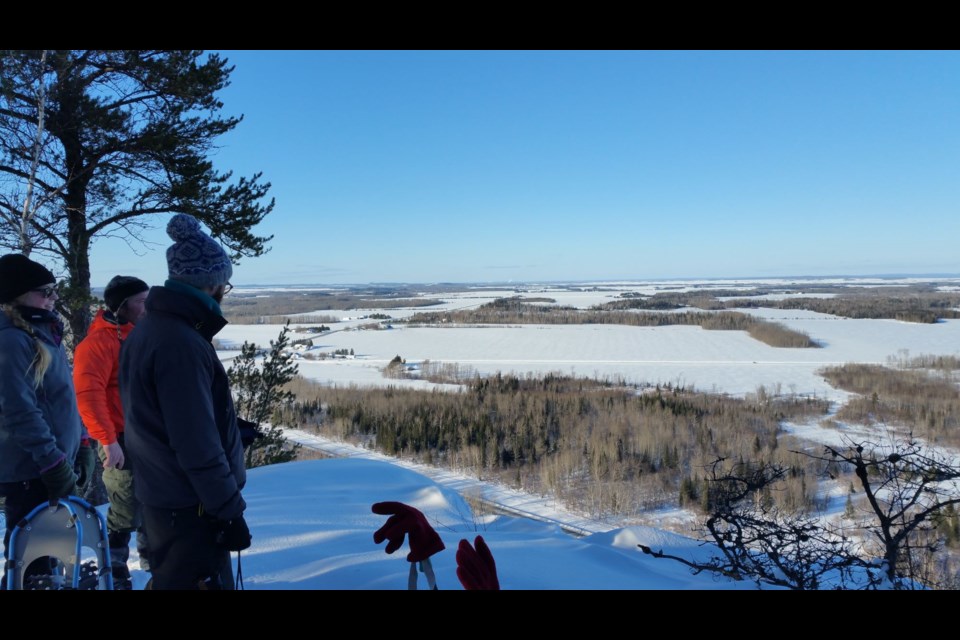For some of us, it is time to go snowshoeing.
Snowshoes offer a different perspective on a unique season. Almost truly a Canadian activity, snowshoeing is a magical way to get outside and explore the winter landscape.
To a new Canadian it might appear strange that we enjoy ambling along over the snow in a manner somewhere between the gait of a duck and a penguin.
Then there is Generation Y and Generation Z, born: 1977-1994 and born: 1995-2012 respectively. And as they have come and will come of age, these generations have and will embrace technology; they are not so much “with” nature and tend to stay within cities and “inside” in general. Snowshoeing may not be on their list, while E-commerce is. So for now, we are left with the “Baby Boomers” and “Generation X” the most likely to enjoy snowshoeing.
Fact and Fiction
Cliff Moulder may be one of the last “great outdoorsmen". He has been on History Channel and other outdoor life television shows. By his own volition he is a “collector” and “fancier” of snowshoes “for a long time.” He does, however, suffer from “nostalgia syndrome;” he likes to use vintage equipment.
When asked if he Iikes the hi-tech snowshoe, Moulder replied, “Of course not but then remember my affliction! I originally viewed the modern snowshoe as a blatant excuse to ignore ten thousand years of evolution but this idea mellowed when I became a snowshoe student.”
He said the new models are “user friendly,” with no special footwear needed. Low maintenance is another feature, “rodents ignore them” in storage and “anything that can withstand a rental season has to have something going for it.”
He explained the hi-tech snowshoes of today have a “modified swallow tail shape with the tail lopped off so they can fit into the trunk of a car.” Without the tail, he calls them “snow draggers” because they drag an enormous amount of snow. In deep snow, they create divots and can be a real encumbrance to anyone following.” The tail, like the keel on the bottom of a canoe, helps the snowshoe to track better or “straight.” Cliff likens these to “elephant tracks. ‘’ He said, “These new snowshoes are usually too small for any serious backcountry enthusiast. Elephants are rather ungainly in deep snow – all the more reason for marketers to sell the unsuspecting pachyderm a pair of overpriced ski poles so they won’t fall over.” He said, “Most people are using them on packed trails anyway.”
At the same time, he said, “You have to love ‘em though as they have put thousands of people outside in winter something that would not have happened with traditional shoes.” He wishes he had developed the new hi-tech snowshoes. “I would be rich enough to collect iconic, museum works of art like the vintage snowshoes in the Bata Shoe Museum or the Canadian Museum of History.” The most famous pair of snowshoes and Cliff has seen them, “are in the RCMP Museum in Regina, the pair owned by the infamous Albert Johnson, ‘The Mad Trapper’.”
Historically he cited the following.
“The germ or idea for footwear that would enhance travel on snow originated in Asia and spread west into northern Europe where skis were developed and east across Siberia into North America to become snowshoes. Over the millennia the snowshoe has evolved and so the modern shoes can be considered the present-day phase in that process.”
Believe it; horses have been trained to wear snowshoes.
“Robert Scott’s fatal journey and race to the South Pole may have ended differently had he taken the snowshoes for his ponies. Instead, he left the snowshoes behind and the ponies floundered.”
Ash is often thought to be the tree species of choice for the frame but “white birch was the only choice for many builders.” Caribou makes the best “babiche” for netting snowshoes, “eel skin may be better.” And the term “catgut” often applied to the netting is “a problematic term, I strongly doubt its validity.”
You see a good many traditional snowshoes in antique shops and at garage sales and on Kijiji.
“Most of these were made in Lorettevile, P.Q., by descendants of the Huron, today the company is called Faber.”
Go to the website and see the modern, hybrid and traditional models. (Another pandemic sign of the times, most of them are sold out!)
Tips and where to go
A couple of tips then.
“There is no need to walk with a wide stance if you have chosen the correct size of snowshoe and know how to use them. Short shoes are more tiresome to wear than longer shoes and their professed advantage in dense brush is minimal. The real advantage can be in hill climbing if they are properly used. The bear paw label is an overused term - originally reserved for temporary snowshoes, often for children.”
And a warning, “most snowshoe harnesses are veritable death traps if one falls through the ice.”
Where to go?
Anywhere, most municipalities have trails and community cross country and snowshoe trail clubs, see this location link on www.steerto.com. Think about accessing provincial parks and conservation reserves, conservation authorities and the Voyageur Trail Association and this map of almost 100 locations in Northeastern Ontario.
This writer has too many pairs of snowshoes but still prefers the moccasins and wooden pair for the deep, fresh snow; there is no better winter experience.
One more tip -- use your ski poles for stability and ascending, descending and traversing slopes for both new and traditional snowshoes.
This winter might be longer than you think or want so there is no better way to begin snowshoeing than just going out, staying out and doing it.
